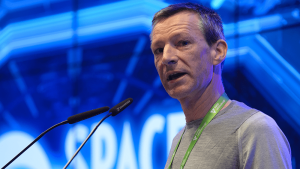Its cameras will be arriving at the space station as part of the Space X-30 Commercial Resupply Mission (CRS) to the ISS. Then, once aboard, Sen’s payload will be robotically attached by Canadarm-2 (pictured) to the station’s Bartolomeo platform. The exact schedule for installation, which includes crew time to prepare the payload, will be determined by NASA.
Sen’s mission is called “SpaceTV-1” and the launch is scheduled for Thursday 21 March.
Speaking about Sen’s mission on behalf of the UK Space Agency, Professor Anu Ojha, Director of Championing Space, said: “Not only will this innovative hardware help an increased number, and more diverse range, of people engage with the wonder of space, but it will support our efforts to monitor and understand climate-related changes on our planet.”
All cameras will film in 4K and at least one camera will be livestreamed continuously. In addition to 4K video, the company is aiming to demonstrate real-time Augmented Reality, enabling viewers to see real-time mapping information on the nadir camera view as it orbits the planet, it said.
“Sen’s 4K live video of Earth and the International Space Station will be freely accessible to everyone,” writes the company. “Sen hopes its 4K livestream of Earth will inspire the world by empowering everyone to see Earth from space like astronauts.”
Sen
 The company was founded in 2014 by Charles Black, right – the founder of the cloud computing business Nasstar – to “democratize space using video to inform, educate, inspire and benefit all humanity”.
The company was founded in 2014 by Charles Black, right – the founder of the cloud computing business Nasstar – to “democratize space using video to inform, educate, inspire and benefit all humanity”.
Its aim is to stream real-time videos from space to the largest possible audience – gathering information on Earth and space and making the data universally accessible.
“Sen will capture its unique video content using both hosted video cameras and its own constellations of small satellites. Sen’s is free for the public to view, with subscription options for downloads and usage. Sen has one satellite in orbit, ETV-A1 and will launch further satellites in 2025.”
Images: Nasa, top; Sen, bottom
See also: ISS National Laboratory boosts in-space production projects

